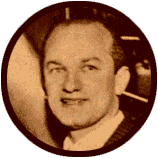 |
||
|
|
||||||||||||||||||||||||||||||||||||||
|
IntroductionEveryone has heard of Charles A. Lindbergh, the first man to fly the Atlantic. But does the name Charles A. Levine ring a bell? Likely not. Yet seventy-five summers ago the two men were locked in a battle for aviation history -- one as a pilot, the other as a promoter. Levine, a 30-year-old millionaire who had made his money buying and selling World War One surplus materiel, had entered the competition for a $25,000 prize for the first person to complete a nonstop flight from New York to Paris. Lindbergh beat him to it on May 20, 1927, but the following day the young entrepreneur announced that his privately owned airplane would presently fly farther faster -- and with a "mystery passenger" aboard. The pilot, he stated, would be one Clarence Chamberlin. The mystery passenger remained a mystery. On June 4, 1927, thousands gathered at Roosevelt Field on Long Island, New York, to witness the takeoff. While they waited, Charles A. Levine climbed into the back of his plane and had Chamberlin taxi him around the airfield. No one thought much of it until the plane was halfway down the runway and gaining speed. Suddenly it was clear: The mystery passenger was none other than Levine himself. The millionaire's wife fainted. His children wept. The press had a field day. Forty-two hours later, Levine and Chamberlin ran out of gas and landed safely in a peasant's wheat field in central Germany. Despite being 40 miles short of the intended destination of Berlin, Chamberlin had smashed Lindbergh's distance and speed record. And Levine had become the world's first transatlantic air passenger -- as well as an international hero whose face was plastered across newspapers from Europe to America. The euphoria was greatest among American Jews, for whom Levine was a new symbol of Jewish courage and fortitude. Yiddish radio stations and newspapers covered and re-covered the story and Jewish musicians wrote songs about him. It seemed Levine had made history. Next Page: The Songs »
|
|||||||||||||||||||
| Copyright 2002 Sound Portraits Productions. All rights reserved. | |||

